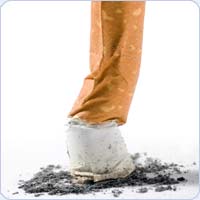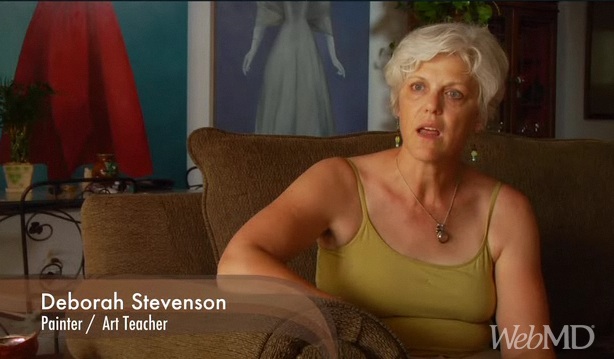
By far my most popular post is the gallery, “12 Depression Busters.” But those suggestions were actually a response to Beyond Blue reader Peg’s query on how to stop smoking. They absolutely do help a person fight depression and the ongoing war against negative thoughts; however they were designed as techniques to use when getting pulled into addictive behaviors.
The last month or so I have used every single one of these. And I’m happy to report that I actually feel a lot freer from insidious, destructive behavior than I did several weeks ago. Here they are: 12 Addiction Zappers. They work!
1. Get Some Buddies
It works for Girl Scouts, depressives, and addicts of all kinds. I remember having to wake up my buddy to go pee in the middle of the night at Girl Scout camp. That was right before she rolled off her cot, out of the tent and down the hill, almost into the creek.
Our job as buddies is to help each other not roll out of the tent and into the stream, and to keep each other safe during midnight bathroom runs. My buddies are the six numbers programmed into my cell phone, the voices that remind me sometimes as many as five times a day: “It will get better.
2. Read Away the Craving
Books can be buddies too! And when you are afraid of imposing on others like I am, they serve as wonderful reminders to stay on course. When I’m in a weak spot, especially with regard to addictive temptations, I place a book next to my addiction object: the Big Book (the Bible) goes next to the liquor cabinet; some 12-step pamphlet gets clipped to the freezer (home to frozen Kit Kats, Twix, and dark chocolate Hershey bars); and I’ll get out Melody Beattie before e-mailing an apology to someone who just screwed me over.
3. Be Accountable to Someone
In the professional world, what is the strongest motivator for peak performance? The annual review (or notification of the pink slip). Twelve-step groups use this method–called accountability–to keep people sober and on the recovery wagon. Everyone has a sponsor, a mentor to teach them the program, to guide them toward physical, mental, and spiritual health.
Today several people together serve as my emotional “sponsor,” keeping me accountable for my actions: Mike (my writing mentor), my therapist, my doctor, Fr. Dave, Deacon Moore, Eric, and my mom. Having these folks around to divulge my misdeeds to is like confession–it keeps the list of sins from getting too long.
4. Predict Your Weak Spots
When I quit smoking, it was helpful to identify the danger zones–those times I most enjoying firing up lung rockets: in the morning with my java, in the afternoon with my java, in the car (if you’ve been my passenger you know why), and in the evening with my java and a Twix bar.
I jotted these times down in my “dysfunction journal” with suggestions of activities to replace the smokes: In the morning I began eating eggs and grapefruit, which don’t blend well with cigs. I bought a tape to listen to in the car. An afternoon walk replaced the 3:00 smoke break. And I tried to read at night, which didn’t happen (eating chocolate is more soothing).
5. Distract Yourself
Any addict would benefit from a long list of “distractions,” activities than can take her mind off of a cig, a glass of Merlot, or a suicidal plot (during a severe depression). Some good ones: crossword puzzles, novels, Sudoku, e-mails, reading Beyond Blue (a must!); walking the dog (pets are wonderful “buddies” and can improve mental health), card games, movies, “American Idol” (as long as you don’t make fun of the contestants…bad for your depression, as it attracts bad karma); sports, de-cluttering the house (cleaning out a drawer, a file, or the garage…or just stuffing it with more stuff); crafts; gardening (even pulling weeds, which you can visualize as the marketing director that you hate working with); exercise; nature (just sitting by the water); and music (even Yanni works, but I’d go classical).
6. Sweat
Working out is technically an addiction for me (according to some lame article I read), and I guess I do have to be careful with it since I have a history of an eating disorder (who doesn’t?). But there is no depression buster as effective for me than exercise. An aerobic workout not only provides an antidepressant effect, but you look pretty stupid lighting up after a run (trust me, I used to do it all the time and the stares weren’t friendly) or pounding a few beers before the gym. I don’t know if it’s the endorphins or what, but I just think–even pray–much better and feel better with sweat dripping down my face.
7. Start a Project
Here’s a valuable tip I learned in the psych ward–the fastest way to get out of your head is to put it in a new project–compiling a family album, knitting a blanket, coaching Little League, heading a civic association, planning an Earth Day festival, auditioning for the local theatre, taking a course at the community college.
I went to Michael’s (the arts and crafts store) and bought 20 different kinds of candles to place around the house, five picture boxes for all the loose photos I have bagged underneath the piano, and two dozen frames. Two years later, all of it is still there, bagged and stored in the garage.
However, I also signed up for a tennis class, because I’m thinking ahead and when the kids go off to college, Eric and I will need another pastime in addition to reading about our kids on Facebook.
8. Keep a Record
One definition of suffering is doing the same thing over and over again, each time expecting different results. It’s so easy to see this pattern in others: “Katherine, for God’s sake, Barbie doesn’t fit down in the drain (it’s not a water slide)” or the alcoholic who swears she will be able to control her drinking once she finds the right job. But I can be so blind to my own attempts at disguising self-destructive behavior in a web of lies and rationalizations.
That’s why, when I’m in enough pain, I write everything down–so I can read for myself exactly how I felt after I had lunch with the person who likes to beat me up as a hobby, or after eight weeks of a Marlboro binge, or after two weeks on a Hershey-Starbucks diet. Maybe it’s the journalist in me, but the case for breaking a certain addiction, or stopping a behavior contributing to depression, is much stronger once you can read the evidence provided from the past.
9. Be the Expert
The quickest way you learn material is by being forced to teach it. I adamantly believe that you have to fake it ’til you make it. And I always feel less depressed after I have helped someone who is struggling with sadness. It’s the twelfth step of the twelve-step program, and a cornerstone of recovery. Give and you shall receive. The best thing I can do for my brain is to find a person in greater pain than myself and to offer her my hand. If she takes it, I’m inspired to stand strong, so I can pull her out of her funk. And in that process, I am often pulled out of mine.
10. Grab Your Security Item
Everyone needs a blankie. Okay, not everyone. Mentally ill recovering addicts like myself need a blankie, a security object to hold when they get scared or turned around. Mine is a medal of St. Therese that I carry in my purse or in pocket. I’m a bit of a scrupulous, superstitious Catholic (I fit the religious OCD profile), but my medal (and St. Therese herself) give me consolation, so she’s staying in my pocket or purse. She reminds me that the most important things are sometimes invisible to the eye: like faith, hope, and love. When I doubt all goodness in the world–and accuse God of a bad creation job–I simply close my eyes and squeeze the medal.
11. Get on Your Knees
This would be the addiction-virgin’s first point, not the eleventh, and it would be followed by instructions on how to pray the rosary or say the Stations of the Cross. But I think that the true addict or depressive need only utter a variation of these two simple prayers: “Help!” and “Take the bloody thing from me, now!”
12. Do Nothing
If you do nada, that means you’re not getting worse, and that is perfectly acceptable most days. After all, tomorrow is another day.
* Click here to subscribe to Beyond Blue and click here to follow Therese on Twitter and click here to join Group Beyond Blue, a depression support group. Now stop clicking.

